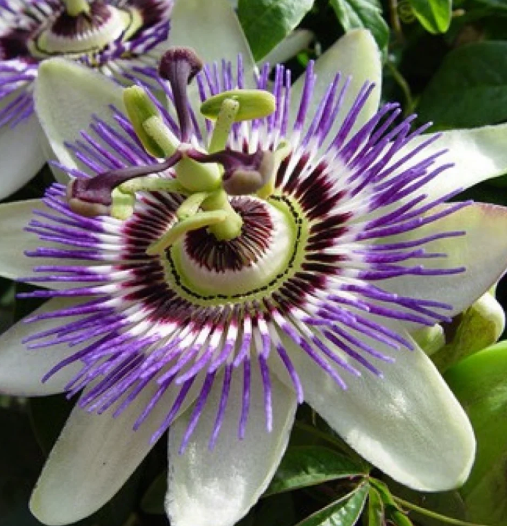Passion Flower Plant
Passion Flower, a versatile Vine, thrives in well-drained soil and full sun exposure. With a fast growth rate, it's hardy in zones 10-12. Known for its medicinal properties, Passion Flower are often used in traditional remedies.

Habit
Vine
Height
3-6 m
Growth
Perennial
Soil
Well-drained, fertile
Shade
Full Sun
Moisture
Well-drained, sandy
Edible
Yes
Medicinal
Yes
Origin
South America
Climatic Condition
Tropical, Subtropical
Temperature (°)
20-30°C
Humidity (%)
60-70%
Potting media
Loamy, peat
Fertilizers
Balanced NPK (10-10-10)
Watering
Regular, moderate
Plant Weight
500-1000 g
Flowering Time
Spring, Summer
Soil Ph level
5.5 - 7.0
Water Ph level
6.0 - 7.0
Soil EC
1-2 dS/m
Yield Per Plant
Fruit (passion fruit)
NPK ratio
10:10:10
life Span
Perennial
Health Benefits
Rich in vitamins, aids digestion, immune support
Suggested Grow Media or Potting Mix ?
50% loamy soil, 30% compost, 20% sand
Suggested Fertigation/Fertilizers
Fertilize every 4 weeks with a balanced, water-soluble fertilizer.
Common Diseases and Remedies
Fusarium Wilt, Root Knot Nematodes, Aphids, Spider Mites, Leaf Spot.
Yellowing, wilting leaves, stunted growth Root galls, stunted growth Yellowing leaves, sticky residue on leaves Yellow stippling on leaves, webbing Brown or black spots on leaves
Remove and destroy affected leaves Crop rotation, avoid planting in infected soil Solarize soil, use nematode-resistant varieties Insecticidal soap, ladybugs Neem oil, predatory mites
Fungicides with thiophanate-methyl, Nematicides, Insecticides containing imidacloprid, Miticides containing abamectin.
HEALTH BENEFITS
· Used as a natural remedy for anxiety and insomnia.
· Has calming properties that help with stress relief.
· Supports heart health by lowering blood pressure.
· Contains antioxidants that reduce inflammation.

